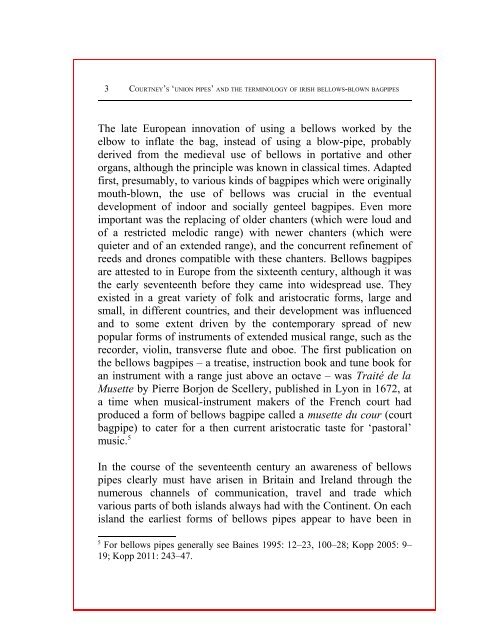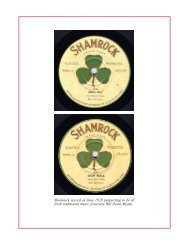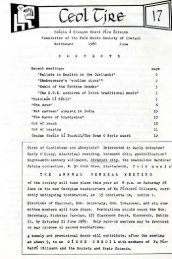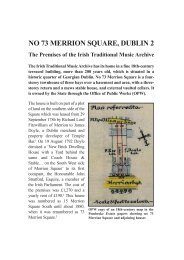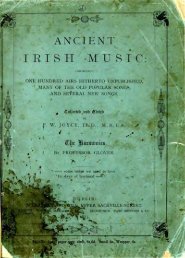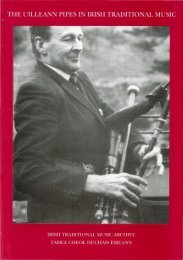Union Pipes - Irish Traditional Music Archive
Union Pipes - Irish Traditional Music Archive
Union Pipes - Irish Traditional Music Archive
You also want an ePaper? Increase the reach of your titles
YUMPU automatically turns print PDFs into web optimized ePapers that Google loves.
3 COURTNEY’S ‘UNION PIPES’ AND THE TERMINOLOGY OF IRISH BELLOWS-BLOWN BAGPIPES<br />
The late European innovation of using a bellows worked by the<br />
elbow to inflate the bag, instead of using a blow-pipe, probably<br />
derived from the medieval use of bellows in portative and other<br />
organs, although the principle was known in classical times. Adapted<br />
first, presumably, to various kinds of bagpipes which were originally<br />
mouth-blown, the use of bellows was crucial in the eventual<br />
development of indoor and socially genteel bagpipes. Even more<br />
important was the replacing of older chanters (which were loud and<br />
of a restricted melodic range) with newer chanters (which were<br />
quieter and of an extended range), and the concurrent refinement of<br />
reeds and drones compatible with these chanters. Bellows bagpipes<br />
are attested to in Europe from the sixteenth century, although it was<br />
the early seventeenth before they came into widespread use. They<br />
existed in a great variety of folk and aristocratic forms, large and<br />
small, in different countries, and their development was influenced<br />
and to some extent driven by the contemporary spread of new<br />
popular forms of instruments of extended musical range, such as the<br />
recorder, violin, transverse flute and oboe. The first publication on<br />
the bellows bagpipes – a treatise, instruction book and tune book for<br />
an instrument with a range just above an octave – was Traité de la<br />
Musette by Pierre Borjon de Scellery, published in Lyon in 1672, at<br />
a time when musical-instrument makers of the French court had<br />
produced a form of bellows bagpipe called a musette du cour (court<br />
bagpipe) to cater for a then current aristocratic taste for ‘pastoral’<br />
music. 5<br />
In the course of the seventeenth century an awareness of bellows<br />
pipes clearly must have arisen in Britain and Ireland through the<br />
numerous channels of communication, travel and trade which<br />
various parts of both islands always had with the Continent. On each<br />
island the earliest forms of bellows pipes appear to have been in<br />
5<br />
For bellows pipes generally see Baines 1995: 12–23, 100–28; Kopp 2005: 9–<br />
19; Kopp 2011: 243–47.


